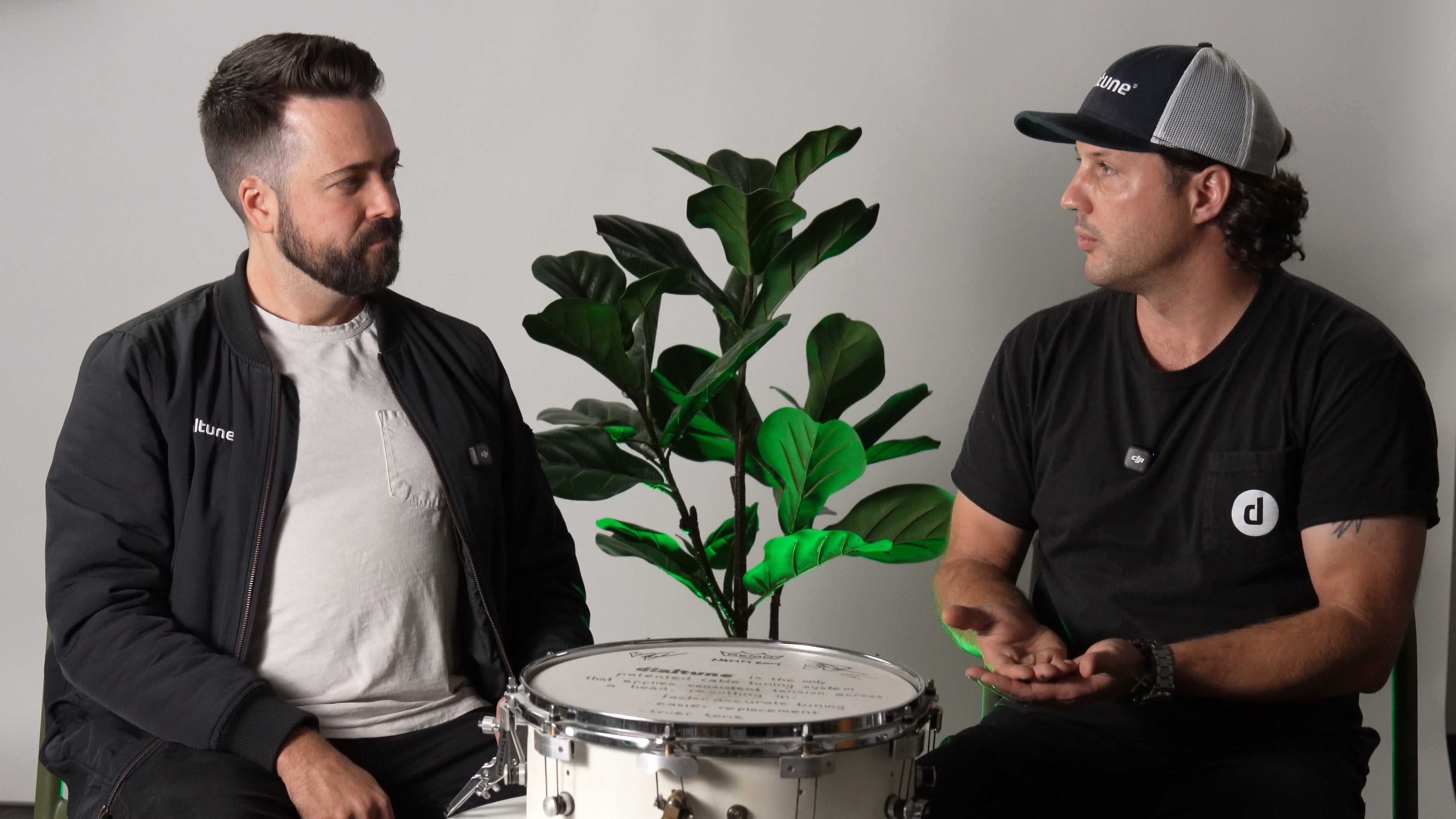Dialtune Origins, Part 3: From the Workhorse Snare to a Full Kit
Dialtune Origins: Part 1 · Part 2 · Part 3
In this final chapter, Alexander Marshman sits with inventor Bryan Bedson while Bryan Saftler runs the cameras to share the milestone we’ve been working toward for almost a decade: a full Dialtune kit. We talk size choices, weight, mounting, bass drum design, and how feedback from thousands of drummers shaped the details.
Why 6.5" × 14" First—and For So Long
Versatility drives our choices. A 6.5" × 14" snare is the most common workhorse on stages and in studios, so we stayed there to serve as many players as possible while we matured the system. We hear your love for 13s, brass shells, and more—every new size is a six-figure decision for a small team, and we’re building for the next 30 years. One solid step at a time.
The Kit: A Long Time Coming
Fun fact: Bryan’s earliest prototypes were toms—a floor tom, then a rack tom. We launched snares first because they’re the signature voice and the hardest engineering challenge (more lugs, throw-off, higher tension). Solve it there and the rest follows. Getting to this kit took tens of thousands of dollars in prototyping and countless iterations with our drummer panel.
Weight, Quick-Release Hoops, and the 50% Drop
Toms had to feel traditional on a stand. We considered dropping the quick-release hoop to save weight; our drummers said a clear “keep it.” So we re-engineered the hardware: moving from cast zinc to cast aluminum housings with steel threaded inserts. Result—quick-release stays, and kit components are roughly 50% lighter than our snare hardware approach.
Mounting: Options Without Compromise
Traditional ISO mounts rely on tension rods; our system uses pulleys. We designed a fixed shell mount with a resonance spacer for clearance and tone, and we’re shipping two mount positions pre-drilled so you can flip sides and keep the dials facing you. Pull the mount off? Clean look with a second Dialtune badge, and basket mounting is always in play.
Player preference landed overwhelmingly on a virgin bass drum with toms mounted from cymbal stands or racks. More flexibility, fewer constraints.
“All That Hardware?”
It looks futuristic, but we’re not drilling more holes than a standard lug/rod setup. With free-floating hoops and spacers offsetting the housings from the shell, there’s less shell contact than many traditional systems. The result is wide-open sustain. Check our recent YouTube demos—no gels, no pillows, very little mixing—just the drums, singing.
Bass Drum: A Different Path to the Same Promise
The bass drum hoop makes quick-release impractical, so we returned to a criss-cross cable path with quick lugs. Stand the drum up, back off tension, unloop, swap the head, re-loop—still fast compared to rods. The dials let you shape not only sound but feel—that perfect beater response in seconds. Session players have noted how solidly it holds tuning over hours of play.
Thank You for Building With Us
People see a launch video and think, “overnight success.” The truth: slow progress, then all at once. To everyone who pre-ordered a kit—and to everyone considering one—thank you. Keep the feedback coming. We’ll keep listening, iterating, and showing up with humility to make drums more fun to play.
Dialtune Origins: Part 1 · Part 2 · Part 3
Credits: Conversation with Alexander Marshman. Camera by Bryan Saftler. Invention, prototyping, and kit development by Bryan Bedson.
We build drums. YOU make them matter.



Share:
Dialtune Origins: The Whole Story in 3 Quick Chapters